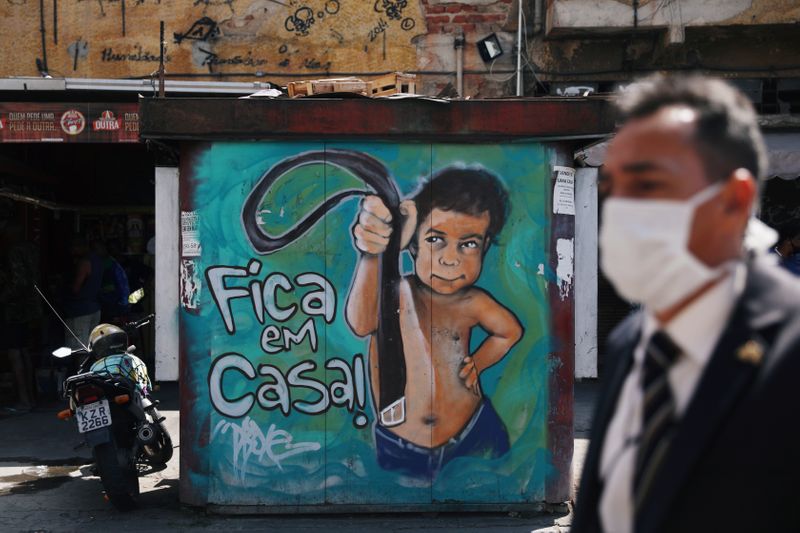By Pedro Fonseca
RIO DE JANEIRO (Reuters) - Brazil's COVID-19 death toll appears to be easing for the first time since May, data shows, a sign the Latin American country could be descending from a long infection plateau that has seen it suffer the world's second-worst outbreak after the United States.
With nearly 4 million confirmed cases, the virus has killed over 120,000 people in Brazil. But the level of average daily deaths dropped below 900 per day last week - the lowest in three and a half months and below the rate of both the United States and India, according to a Reuters tally.
Researchers at Imperial College London also calculate that the transmission rate in Brazil, at which each person infected with the coronavirus infects another person, is now below 1, the level required for new infections to slow.
However, the rate previously fell below 1 in August, only to rebound a week later, according to Imperial.
The government statistics are also volatile. On Tuesday and Wednesday, Brazil registered more than 1,100 deaths each day, and experts say it is too early to say the worst is over.
"We are on a downward trend compared to the previous high plateau," said Roberto Medronho, an infectious diseases expert at the Federal University of Rio de Janeiro. "But, the numbers are still high and we have to remain vigilant so that it doesn't grow again."
CAUTIONARY TALE
Epidemiologists see Brazil's example as a warning to some countries, like India, that are now seeing cases surge.
"Brazil is a cautionary tale," said Albert Ko, a professor at the Yale School of Public Health who has decades of experience in Brazil. "The epidemic hit hard and many evidence-based interventions were not implemented or done properly in many places."
Social distancing, held by most public health experts as the key tool for containing the spread of the virus while no vaccine exists, was poorly implemented from the start in Brazil, sustaining the long peak in infections and deaths, experts say.
Data suggests that has been weakening too.
A Reuters analysis of Google (NASDAQ:GOOGL) mobility data, which collates cellphone movement, showed that the number of people coming and going from places of work in Brazil went from a 37.8% reduction from pre-pandemic levels in April to down just 16% in August. Movement at transit hubs has also increased substantially, the data showed.
"We have to work, because we pay rent and the cost of living is very expensive," said waitress Patrícia Lima, who returned to her restaurant in Rio de Janeiro this month after three months at home.
Aboard the crowded bus she takes to get to work, many people don't wear masks, she said.
Stay-at-home measures have been loosened across almost the entire country amid pressure from President Jair Bolsonaro, who has criticized them as harmful to the economy.
Viral photos from the weekend showed packed beaches in Rio de Janeiro. Restaurants and bars are busy in Sao Paulo.
For Paulo Lotufo, an epidemiologist at the University of Sao Paulo's Medical School, the main cause of the long plateau was places such as the south and mid-west failing to maintain lockdown measures.

"If they had taken the correct measures, done adequate controls and maintained them for a longer period, they would have avoided an outbreak and Brazil would be in a better situation," he said.